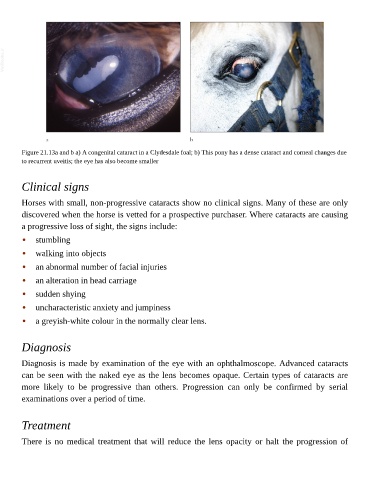Page 991 - The Veterinary Care of the Horse
P. 991
VetBooks.ir
Figure 21.13a and b a) A congenital cataract in a Clydesdale foal; b) This pony has a dense cataract and corneal changes due
to recurrent uveitis; the eye has also become smaller
Clinical signs
Horses with small, non-progressive cataracts show no clinical signs. Many of these are only
discovered when the horse is vetted for a prospective purchaser. Where cataracts are causing
a progressive loss of sight, the signs include:
• stumbling
• walking into objects
• an abnormal number of facial injuries
• an alteration in head carriage
• sudden shying
• uncharacteristic anxiety and jumpiness
• a greyish-white colour in the normally clear lens.
Diagnosis
Diagnosis is made by examination of the eye with an ophthalmoscope. Advanced cataracts
can be seen with the naked eye as the lens becomes opaque. Certain types of cataracts are
more likely to be progressive than others. Progression can only be confirmed by serial
examinations over a period of time.
Treatment
There is no medical treatment that will reduce the lens opacity or halt the progression of

